High resolution melting for mutation scanning of TP53 exons 5-8
- PMID: 17764544
- PMCID: PMC2025602
- DOI: 10.1186/1471-2407-7-168
High resolution melting for mutation scanning of TP53 exons 5-8
Abstract
Background: p53 is commonly inactivated by mutations in the DNA-binding domain in a wide range of cancers. As mutant p53 often influences response to therapy, effective and rapid methods to scan for mutations in TP53 are likely to be of clinical value. We therefore evaluated the use of high resolution melting (HRM) as a rapid mutation scanning tool for TP53 in tumour samples.
Methods: We designed PCR amplicons for HRM mutation scanning of TP53 exons 5 to 8 and tested them with DNA from cell lines hemizygous or homozygous for known mutations. We assessed the sensitivity of each PCR amplicon using dilutions of cell line DNA in normal wild-type DNA. We then performed a blinded assessment on ovarian tumour DNA samples that had been previously sequenced for mutations in TP53 to assess the sensitivity and positive predictive value of the HRM technique. We also performed HRM analysis on breast tumour DNA samples with unknown TP53 mutation status.
Results: One cell line mutation was not readily observed when exon 5 was amplified. As exon 5 contained multiple melting domains, we divided the exon into two amplicons for further screening. Sequence changes were also introduced into some of the primers to improve the melting characteristics of the amplicon. Aberrant HRM curves indicative of TP53 mutations were observed for each of the samples in the ovarian tumour DNA panel. Comparison of the HRM results with the sequencing results revealed that each mutation was detected by HRM in the correct exon. For the breast tumour panel, we detected seven aberrant melt profiles by HRM and subsequent sequencing confirmed the presence of these and no other mutations in the predicted exons.
Conclusion: HRM is an effective technique for simple and rapid scanning of TP53 mutations that can markedly reduce the amount of sequencing required in mutational studies of TP53.
Figures

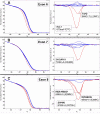

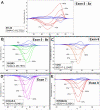
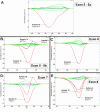
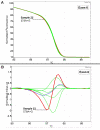
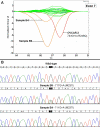
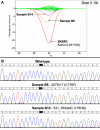
Similar articles
-
High-throughput amplicon scanning of the TP53 gene in breast cancer using high-resolution fluorescent melting curve analyses and automatic mutation calling.Hum Mutat. 2008 May;29(5):757-64. doi: 10.1002/humu.20726. Hum Mutat. 2008. PMID: 18348286
-
Mutation scanning of exon 20 of the BRCA1 gene by high-resolution melting curve analysis.Clin Biochem. 2010 Jan;43(1-2):178-85. doi: 10.1016/j.clinbiochem.2009.08.024. Epub 2009 Sep 9. Clin Biochem. 2010. PMID: 19747471
-
Assessing high-resolution melt curve analysis for accurate detection of gene variants in complex DNA fragments.Hum Mutat. 2009 Jun;30(6):876-83. doi: 10.1002/humu.20919. Hum Mutat. 2009. PMID: 19280649
-
The TP53 colorectal cancer international collaborative study on the prognostic and predictive significance of p53 mutation: influence of tumor site, type of mutation, and adjuvant treatment.J Clin Oncol. 2005 Oct 20;23(30):7518-28. doi: 10.1200/JCO.2005.00.471. Epub 2005 Sep 19. J Clin Oncol. 2005. PMID: 16172461 Review.
-
s-RT-MELT: a novel technology for mutation screening.Methods Mol Biol. 2010;653:207-19. doi: 10.1007/978-1-60761-759-4_12. Methods Mol Biol. 2010. PMID: 20721745 Review.
Cited by
-
Heterozygous Single-Nucleotide Polymorphism Genotypes at Heat Shock Protein 70 Gene Potentially Influence Thermo-Tolerance Among Four Zebu Breeds of Nigeria.Front Genet. 2021 Apr 12;12:642213. doi: 10.3389/fgene.2021.642213. eCollection 2021. Front Genet. 2021. PMID: 33912217 Free PMC article.
-
Is high resolution melting analysis (HRMA) accurate for detection of human disease-associated mutations? A meta analysis.PLoS One. 2011;6(12):e28078. doi: 10.1371/journal.pone.0028078. Epub 2011 Dec 14. PLoS One. 2011. PMID: 22194806 Free PMC article.
-
In vitro sensitivity testing of minimally passaged and uncultured gliomas with TRAIL and/or chemotherapy drugs.Br J Cancer. 2008 Jul 22;99(2):294-304. doi: 10.1038/sj.bjc.6604459. Epub 2008 Jul 1. Br J Cancer. 2008. PMID: 18594532 Free PMC article.
-
CEBPA gene mutational status: a complete screening using high-resolution melt curve analysis.Mol Diagn Ther. 2009;13(3):195-200. doi: 10.2165/01250444-200913030-00004. Mol Diagn Ther. 2009. PMID: 19650672
-
Use of chimeric DNA-RNA primers in quantitative PCR for detection of Ehrlichia canis and Babesia canis.Appl Environ Microbiol. 2009 Oct;75(19):6393-8. doi: 10.1128/AEM.00720-09. Epub 2009 Jul 24. Appl Environ Microbiol. 2009. PMID: 19633128 Free PMC article.
References
-
- Deppert W, Buschhausen-Denker G, Patschinsky T, Steinmeyer K. Cell cycle control of p53 in normal (3T3) and chemically transformed (Meth A) mouse cells. II. Requirement for cell cycle progression. Oncogene. 1990;5:1701–1706. - PubMed
Publication types
MeSH terms
Substances
LinkOut - more resources
Full Text Sources
Other Literature Sources
Research Materials
Miscellaneous

